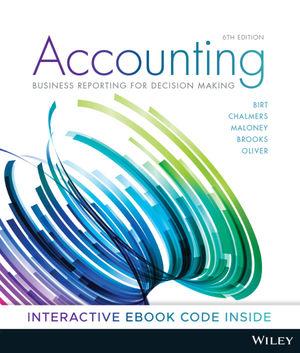3 Years Later The company has now been in business 3 years. Nick has been working on growing within the industry and paying down debt. Nick is hoping that some additional analysis can be completed on his business to assess its success and is open to any kind of suggestions you may provide him with Perfect Smile's financial statements are shown below. Analyze the statements, completing the requirements to the right. Your answers should be in the cells noted in blue. Do not make any changes to the financial statements. Perfect Smile Company Statement of Income For the year ended December 31 Sales Revenue (Note 1) Cost of Goods Sold: Gross Margin 2020 $3,998,314 1,672,667 2,325,647 2019 $3,127,434 1,216,572 1,910,862 Operating expenses Sales and marketing expenses 981,784 940,238 Occupancy expenses 196,357 188,048 Administration expenses 274,900 319,681 Total operating expenses 1,453,040 1,447,967 Operating income Non-operating or other Gain (loss) on sale of land and building 130,427 12,712 Interest (expense) income 23,256 19,109 Total non-operating 153,683 31,821 Income before tax 718,924 431,075 Income tax expense 161,758 101,303 Net Income (Loss): 557,166 329,772 Note 1: Management has determined that 80% of its sales were on credit in 2020, and 90% in 2019. Perfect Smile Company Statement of Changes in equity For the year ended December 31 2020 Retained earnings, January 1, 2019 657,256 Add: Net income 557,166 Less: Dividends declared (178,300) Retained earnings, December 31, 2020 1,036,122 2019 423,113 329,772 (95,630) 657,256 2019 2018 100,834 624,869 15,327 890,607 1,631,637 158,731 330,000 19,632 801,546 1,309,909 Perfect Smile Company Statement of Financial Position As at December 31 2020 Assets Current assets: Cash 75,449 Accounts receivable, net (Note 2) 771,443 Prepaid expenses 18,369 Inventory 978,689 Total current assets 1,843,950 Non-Current Assets Marketable securities 500,000 Property plant & equipment, net 561,501 Total assets 2,905,451 Liabilities and shareholders' equity Current liabilities: Accounts payable 542,310 Unearned revenue 68,119 Bank loan, current portion 75,000 Total current liabilities 685,429 Non-Current liabilities: Bank loan payable 708,900 Total liabilities 1,394,329 Shareholders' equity Common shares 475,000 Retained earnings 1,036,122 Total liabilities and shareholders' equity 2,905,451 400,000 533,382 2,565,019 50,000 565,700 1,925,609 617,828 31,035 75,000 723,863 314,443 54,153 75,000 443,596 783,900 1,507,763 858,900 1,302,496 400,000 657,256 2,565,019 200,000 423,113 1,925,609 Note 2: Accounts receivable is net of allowance for doubtful accounts (AFDA). Perfect Smile Company Statement of Cash Flows For the Year Ended December 31 2020 2019 557,166 66,418 (130,427) 329,772 91,170 (12,712) Cash Flows from Operating Activities Net Income Depreciation Expense Gain on sale of Equipment Changes in working capital items: Accounts Receivable Inventories Prepaid expenses Accounts Payable Unearned revenue Net cash used for operating activities Cash Flows from Investing Activities Add: Purchase of marketable securities Add: Proceeds from Sale of Equipment Deduct: Acquisition of equipment Net cash provided by investing activities Cash Flows from Financing Activities Issurance (repurchase) of common shares Less: Dividends Paid Less: Repayment of Bank Loan Net cash used for financing activities (146,574) (88,082) (3,042) (75,517) 37,084 217,025 (294,869) (89,061) 4,305 303,385 (23,118) 308,873 (100,000) 205,000 (169,110) (64,110) (350,000) 55,000 (101,140) (396,140) 75,000 (178,300) (75,000) (178,300) 200,000 (95,630) (75,000) 29,370 Overall increase (decrease) in cash Cash position at beginning of year Cash position at end of year (25,385) 100,834 75,449 (57,897) 158,731 100,834 Requirement a - Ratio Analysis Please ensure you read the notes under the financial statements. Please calculate each of the following ratios for 2019 and 2020. Answers must be in the blue cells provided using formulas in Excel (do not use your calculator and input your final answer into Excel). 2020 2019 Current Assets/Current Liabilities (Current Assets - Inventory. Prepaid Expenses Current Liabilities Liquidity Ratio Current Ratio Quick Ratio Activity Ratio Accounts Receivable Turnover Average Collection Period Inventory Turnover Days to Sell Inventory Accounts Payable Tumover Average Payment Period Solvency Ratios Debt to Equity Cash Flows to Total Liabilities Profitability Ratios Gross Margin Profit Margin Return on Equity Return on Assets Credit Sales / Average Accounts Receivable (net) 365 / Accounts Receivable Turnover Cost of Goods Sold / Average Inventory 365 days / Inventory Turnover Credit Purchases/ Average Accounts Payable 365 / Accounts Payable Tumover Net debt/Shareholders Equity Cashflows from Operating Activities / Total Liabilities Margin / Sales Revenue Net Income / Sales Revenue Net Income / Average Total Shareholders Equity Net Income / Average Total Assets Requirement b - Financial Statement Analysis i) Nick has a policy of collecting accounts receivable within 45 days. How does the average collection period compare to these terms? li) Has the accounts receivable turnover ratio improved or worsened from 2019 to 2020? iii) What has happened to the average collection period from 2019 to 2020? iv) Has the company shown an improvement in their liquidity ratios from 2019 to 20207 If the bank loan requires that the company has a minimum quick ratio of 1:5 to 1, is the company meeting this obligation? 1) What do the solvency ratios tell you? vi) Examine the company's cash flow statement. What is the cash flow pattern for 2020 2019? 2020 2019 Operating Activities Investing Activities Financing Activities What does the cash flow pattern tell you about Perfect Smile Company? vii) Has the company's gross margin improved from 2019 to 20207 vill) How does gross margin differ from profit margin














